Everything you need to know about cooking through an egg shortage
Shoppers cannot afford to waste a single egg. Here’s how to shop for, store, stretch and/or substitute eggs in your cooking and baking.
Concerns about a nationwide egg shortage are growing as an avian influenza (bird flu) outbreak continues to spread at Victorian poultry farms. But careful shopping, storage and use of substitutes can help home cooks get through.
Five farms have reported bird flu incidents, leading to the culling of more than 600,000 chickens, which is expected to affect egg supplies and prices over the next couple of weeks.
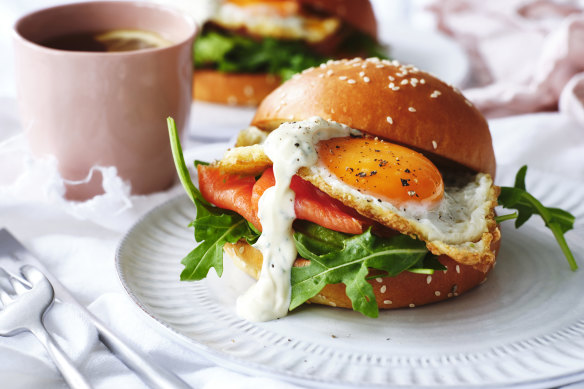
On Sunday, Coles introduced a temporary limit of two egg cartons per customer. The measure affects stores in all states except Western Australia.
Victorian Industry Minister Natalie Hutchins says egg supplies should remain steady if the virus is contained to one area, and warns against stockpiling.
“Consumers rely on eggs so much, far beyond just baking or to mix into things. It’s such an essential source of good value protein,” says RecipeTin Eats founder Nagi Maehashi. “We cannot afford to waste a single egg any more.”
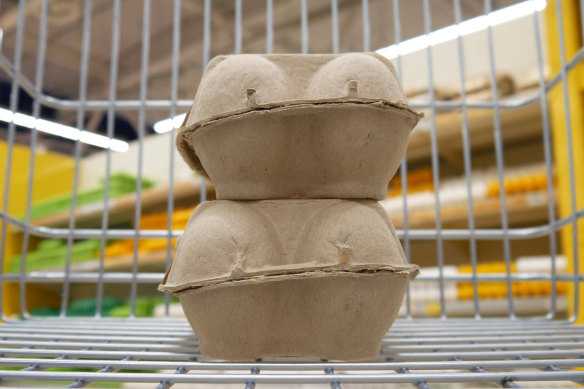
Shopping
Check the underside of egg cartons for any signs of breakage and open the carton to ensure all the eggs are intact, says Maehashi.
“Buy jumbo eggs if you want value for money by weight, but be careful with them if you are baking because standard recipes use ‘large eggs’, which are smaller,” she says.
Egg farmer and Victorian Farmers Federation vice-president Danyel Cucinotta says local, independent supermarkets will have greatest availability.
Eggs are also available to buy directly from farmers through farmers’ markets and online services such as Open Food Network and Farm2Market, while online directories such as Local Harvest and Straight to the Source show independent producers and retailers in your area.
And if all else fails? “Suck up to a friend who has their own chickens,” Maehashi suggests.
Cartons of separated egg whites remain unaffected by Coles’ purchase limits. Brands such as Puregg contain 100 per cent egg whites, without added stabilisers.
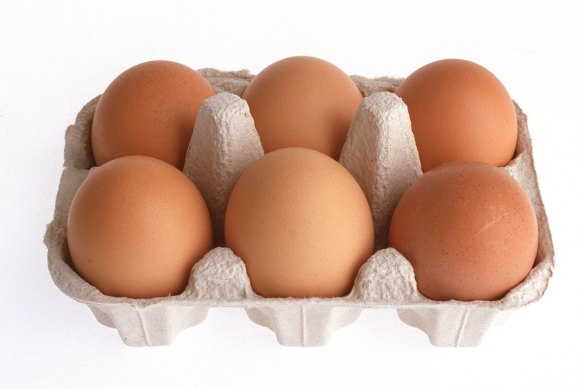
Storage
Farmer-owned not-for-profit research and development company Australian Eggs advises storing eggs in their cardboard carton in the fridge to protect the porous shells from potential bacterial contamination.
“Don’t transfer them to the egg shelf in the door, if you have one, as they don’t like the changes of temperature experienced with constant door opening and closing,” Maehashi says.
She suggests putting the carton towards the back of a middle shelf, with the temperature set to around 4 degrees.
It is possible to freeze eggs, though not in their shells. Crack the eggs into a lidded container and whisk the egg whites and the yolk together, or separate them into different containers, leaving a small amount of space at the top of the container for expansion. Seal and place into the freezer, labelling the container with the contents and date.
Frozen eggs should remain fresh for a year, but it is best to use them within four months. Defrost by leaving them in the fridge overnight, and cook to eat as soon as they have thawed.
Freezing hard-boiled eggs is not recommended, as they will become tough and watery.
“Poach and fry eggs while still fresh, and save older eggs for baking cakes and making omelettes.”Jill Dupleix
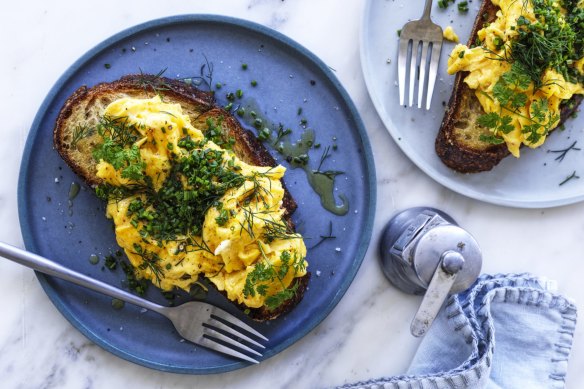
Use-by dates
In Australia, use-by dates are calculated as six weeks from the day the eggs were packed into the carton.
Check the dates on the cartons, buying those with the most distant date to ensure they’re as fresh as possible.
Cookbook author and food writer Jill Dupleix advises using fresh eggs for poaching and frying, saving older eggs for baking cakes and making omelettes and scrambled eggs, “dishes where they are not required to hold their shape”.
“Also, older eggs are the easiest to peel when hard-boiled, and fresh eggs are the most difficult,” she says.
You can spot a spoiled egg by the beads of moisture or slimy texture on its shell, which indicate the presence of bacteria.
Australian Eggs says it’s possible to tell how fresh an egg is by lowering it into a bowl of water. If the egg is old and too much air has permeated the shell, it will float. If the egg is fresh, it will sink to the bottom.
Still unsure? Crack it open (into a separate bowl, not one with other ingredients). “If you can smell even a hint of sulphur, it’s off, and cooking will only make it worse … get rid of it,” Dupleix says.
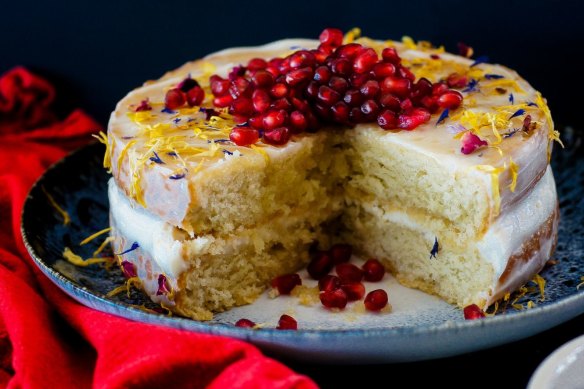
Egg substitutes
Plant-based egg substitutes have evolved far beyond the grainy, glue-like flaxseed “eggs” of the past. Simply Egg is a standout. Made from lupin bean protein, this sunshine-yellow substitute makes a convincing scrambled egg or omelette when seasoned correctly.
Newcomer OnlyEg sells plant-based products resembling egg yolks, poached eggs, egg “shreds” (for use in stir-fries, for example) and even tamagoyaki (a type of Japanese omelette made from beaten eggs).
Orgran No Egg is an egg replacement that can be used in simple cake and biscuit recipes. It is widely available from major supermarkets.
There is also the excellent trick of using aquafaba, the liquid from a can of chickpeas, as an egg white substitute in baking recipes.
But Maehashi is not convinced by egg substitutes. “I personally would not try to substitute eggs in baking. As for savoury foods, I would look for other good-value protein sources like canned fish,” she says.
“Canned sardines are a favourite at the moment, and of course for everyday cooking, I look no further than good ole’ canned tuna.”
Dupleix advises making eggs go further by adding milk when beating eggs for a scramble or a frittata. “It also gives the finished dish a nice creaminess,” she says.
The best recipes from Australia's leading chefs straight to your inbox.
Sign up